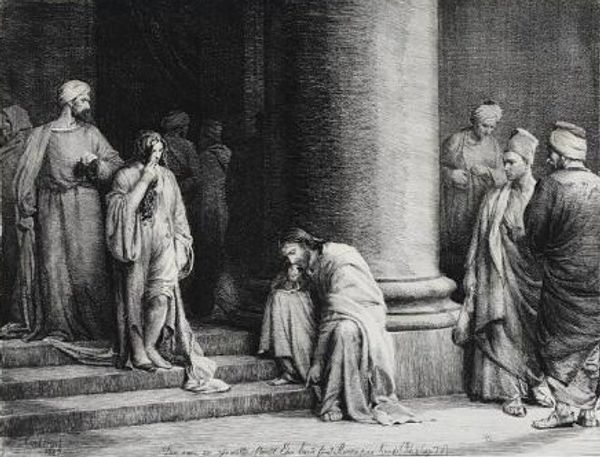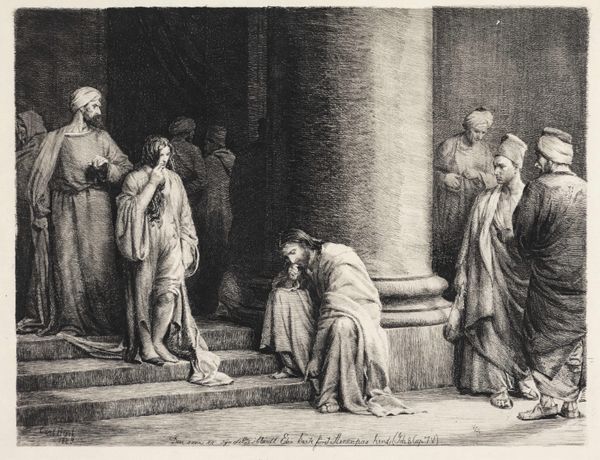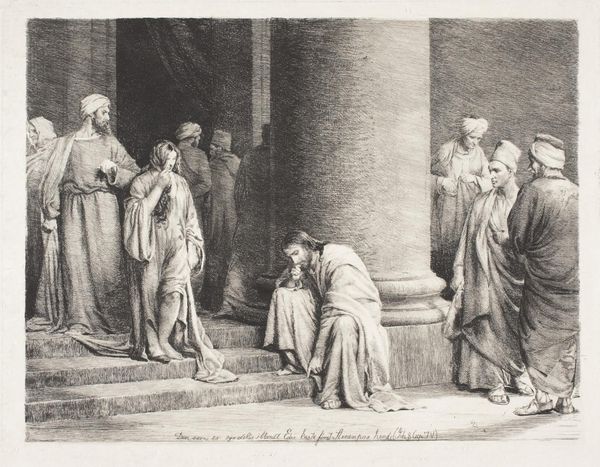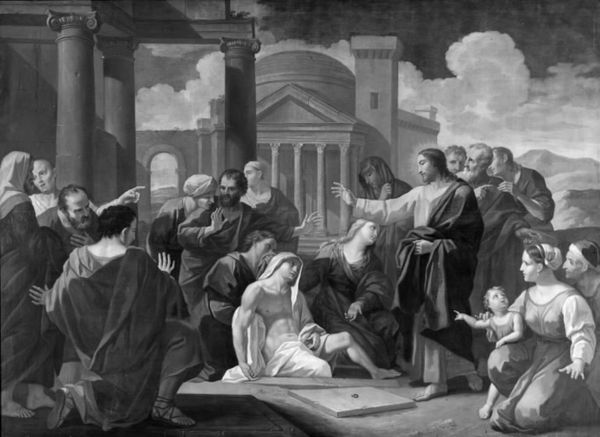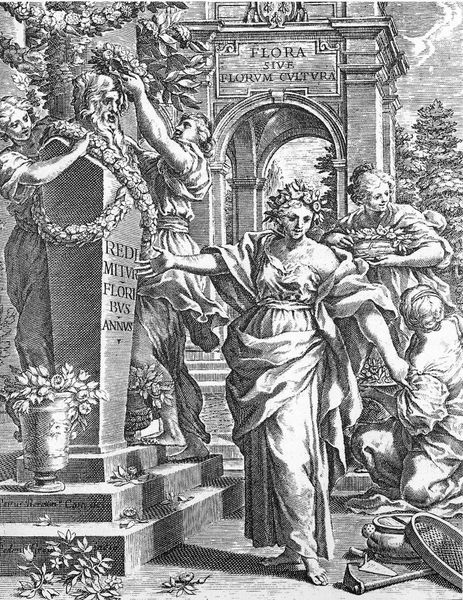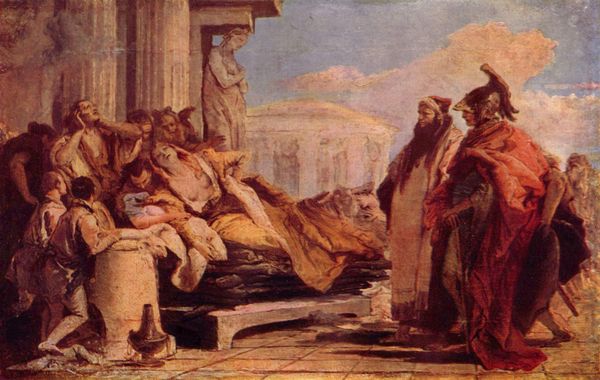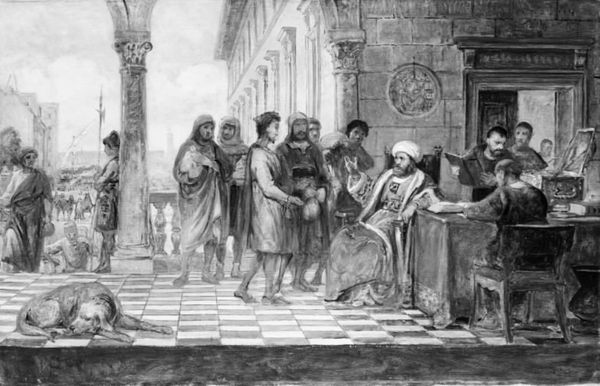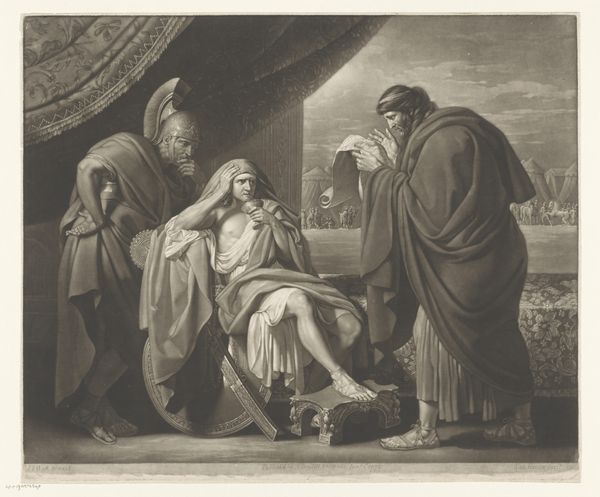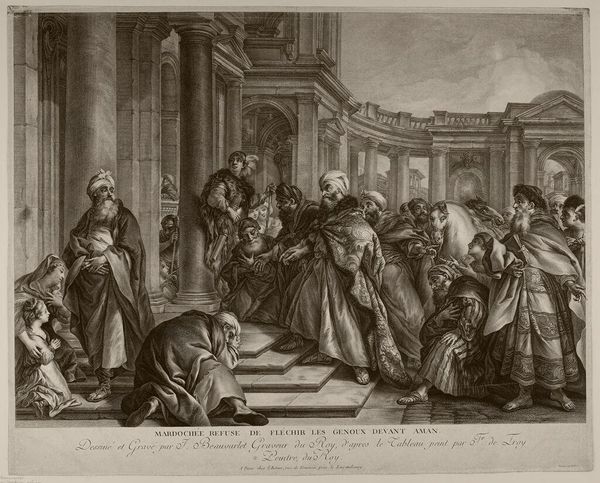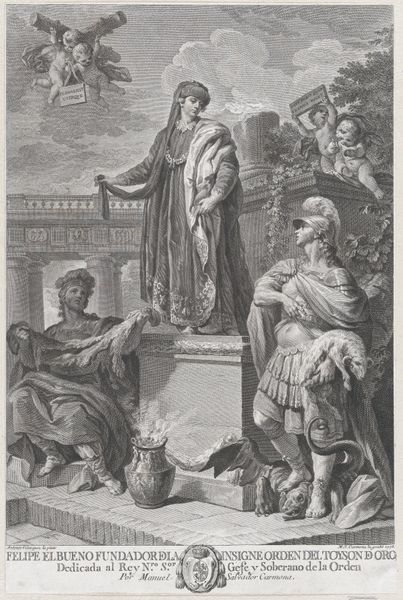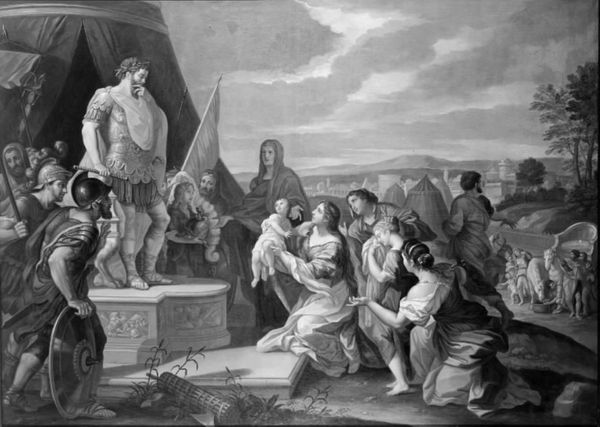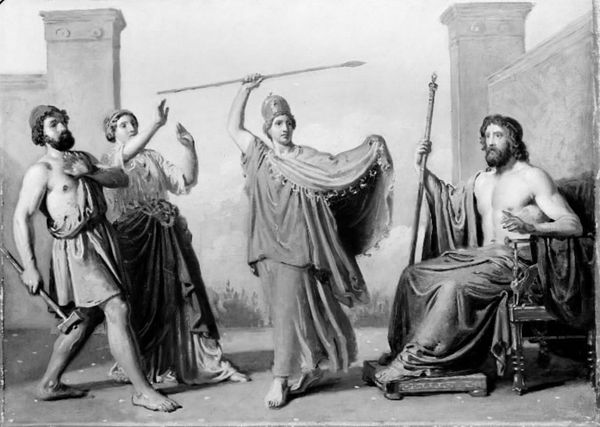
painting, architecture
#
neoclacissism
#
painting
#
landscape
#
classical-realism
#
charcoal drawing
#
figuration
#
cityscape
#
history-painting
#
academic-art
#
charcoal
#
architecture
Dimensions: 86 cm (height) x 106 cm (width) (Netto)
Editor: Here we have Hubert Robert’s "Architecture with Figures," painted sometime between 1748 and 1808. It’s a monochromatic scene, quite dramatic, with figures amidst classical ruins. I'm curious, with your art historical background, what social commentary or historical influences do you see playing out in this work? Curator: Well, considering Robert’s focus, especially during a period of significant social upheaval like the late 18th century, the ruins are far from simply aesthetic. Consider how this fascination with ruins connects to broader cultural trends – a romanticization of the past intertwined with anxiety about the present. Editor: So, these are more than just pretty backdrops? Curator: Exactly. Think about the rise of Neoclassicism. It wasn't just about imitating classical forms, but about invoking a sense of order, virtue, and civic duty, perhaps as a reaction to perceived decadence, particularly amongst the elite and ruling class. How do you interpret the presence of the figures within this decaying architectural space? What roles do they play? Editor: That’s a great point. The figures appear almost indifferent to the decay around them. Perhaps it's commenting on the aristocracy, clinging to outdated structures while society crumbles? Curator: Precisely! The artist critiques and reinforces cultural values, showing not just the grand buildings, but their relationship with the common person, who has been removed from power by this stage. That’s how art like this participated in a visual dialogue of power and privilege, contributing to shaping public perceptions and even influencing the course of history. Editor: This has definitely shifted my view. I was seeing pretty ruins but missed all the underlying social cues about power, class, and social commentary that reflect Hubert Robert's role as more than just a painter. Curator: Indeed! The politics of imagery are crucial to understand how artworks shape society's perceptions.
Comments
No comments
Be the first to comment and join the conversation on the ultimate creative platform.
